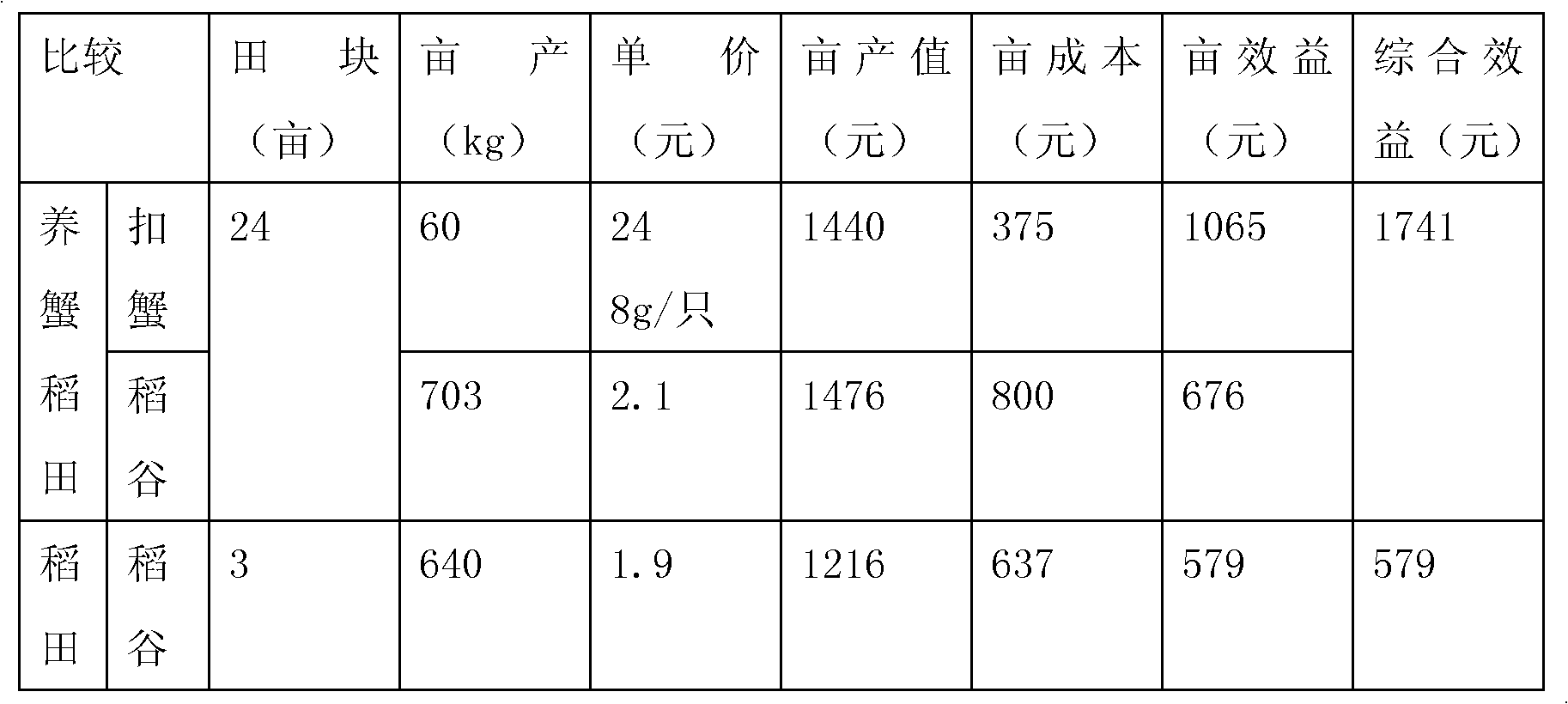Method for breeding juvenile crabs in rice fields
A technology for deducting crabs and paddy fields is applied in the field of ecological aquaculture of special aquatic products, which can solve problems such as the reduction of natural river crabs, and achieve the effects of reducing bulk density, improving symbiotic ecological environment, and improving ventilation conditions.
- Summary
- Abstract
- Description
- Claims
- Application Information
AI Technical Summary
Problems solved by technology
Method used
Image
Examples
Embodiment 1
[0058] The method of the paddy field culture buckle crab of present embodiment is, as figure 1 The schematic diagram of raising buckle crabs in paddy fields is shown as follows:
[0059] (1) Selection of paddy fields: Crab paddy fields should be selected near water sources, with good water quality, no pollution, convenient drainage and irrigation, strong water retention and fertilizer retention performance, not submerged during flood seasons, and low-lying and shoals with large contiguous areas.
[0060] (2) Selection of rice seeds: Rice seeds should be selected from varieties that are resistant to diseases and insect pests, lodging resistance, salt and alkali tolerance, fertility resistance, high quality and high yield, and choose Liaoxing No. 1 rice variety.
[0061] (3) Selection of megalopa: transport crab larvae from the hatchery and place them in the crab ditch on one side of the field for temporary cultivation. Salt has been added in advance to adjust the water salinity...
Embodiment 2
[0086] During 2006~2009 May~October, in Baqiang Town, Panshan County, Panjin City, Liaoning Province, a rice field crab breeding demonstration area was implemented, and the method steps of Embodiment 1 were adopted to carry out paddy field breeding buckle crabs and rice in the rice field crab breeding demonstration base. Seed Koshihikari rice, and choose to stock crabs with neat specifications in early June, with an average of 0.25g / piece, 12,000 pieces / mu. As a result, the average number of buckle crabs caught in early October is 8.3g / piece, with an average of 60 kg / mu; the rice yield is The average is 700-750 kg / mu, as shown in Table 1.
[0087] Table 1
[0088]
[0089] As can be seen from Table 1: the input-output ratios of the crab paddy field and the conventional paddy field are respectively: 1: 2.48 and 1: 1.91; The method of breeding buckle crabs is a four-in-one three-dimensional ecological planting model of rice, buckle crabs, soybeans and Elodea. The obtained crab...
Embodiment 3
[0091] The method of the paddy field culture buckle crab of the present embodiment is:
[0092] (1) Selection of paddy fields: Crab paddy fields should be selected near water sources, with good water quality, no pollution, convenient drainage and irrigation, strong water retention and fertilizer retention performance, not submerged during flood seasons, and low-lying and shoals with large contiguous areas.
[0093] (2), the selection of rice seeds: rice seeds should choose varieties that are resistant to diseases and insect pests, lodging resistance, salt and alkali tolerance, fertility resistance, high quality and high yield, and choose Yanfeng No. 47 rice variety.
[0094] (3) Selection of megalopa: transport crab larvae from the hatchery and place them in the crab ditch on one side of the field for temporary cultivation. Salt has been added in advance to adjust the water salinity of the crab ditch to keep the salinity at 5- 7. Two hours after the megalopa enters the holding...
PUM
 Login to View More
Login to View More Abstract
Description
Claims
Application Information
 Login to View More
Login to View More - R&D
- Intellectual Property
- Life Sciences
- Materials
- Tech Scout
- Unparalleled Data Quality
- Higher Quality Content
- 60% Fewer Hallucinations
Browse by: Latest US Patents, China's latest patents, Technical Efficacy Thesaurus, Application Domain, Technology Topic, Popular Technical Reports.
© 2025 PatSnap. All rights reserved.Legal|Privacy policy|Modern Slavery Act Transparency Statement|Sitemap|About US| Contact US: help@patsnap.com



